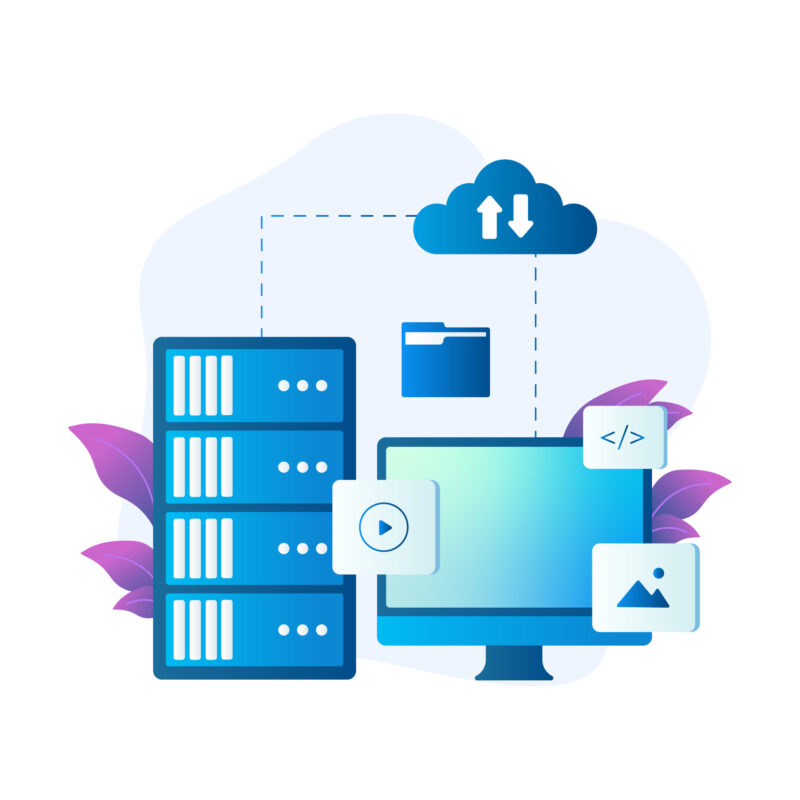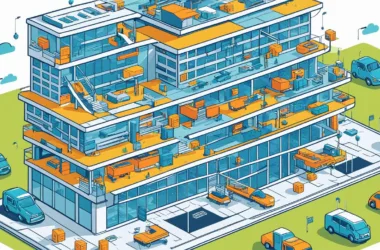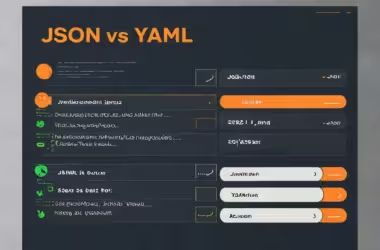Do you need clarification on how to differentiate between serverless vs containers? Serverless computing frees developers from infrastructure management, focusing solely on code, while containers provide a portable environment for running applications. Serverless scales automatically and bills based on usage, while containers offer more control over resources.
Hence, choosing depends on workload and operational preferences. In this guide, we will cover a detailed comparison between the two paradigms, and the distinction between containers and virtual machines.
What Is Serverless Computing?
Serverless computing is often called Function as a Service (FaaS). It is a cloud computing model where cloud providers manage the infrastructure required to run code. Also, it helps the developers to focus solely on writing and deploying functions or applications.
In this model, developers are relieved of managing servers, scaling resources, and provisioning infrastructure, as the cloud provider handles these tasks automatically.
Hence, Serverless computing is event-driven, and specific events, such as HTTP requests, database changes, or file uploads, trigger the meaning functions. Also, they are charged based on execution time and resources consumed.
Why Do We Need Serverless Computing?
Here are the reasons for the need for serverless computing:
- Cost Efficiency: Pay only for the resources used during function execution rather than maintaining idle servers.
- Scalability: Automatically scale up or down in response to changes in demand, ensuring optimal performance without manual intervention.
- Developer Productivity: Allows developers to focus on writing code without worrying about server management, infrastructure provisioning, or scalability concerns.
- Reduced Operational Overhead: Eliminates the need for server maintenance, updates, and security patches, freeing up resources for other tasks.
- Faster Time-to-Market: Rapidly deploy and iterate on applications, leveraging pre-built services and integrations provided by the cloud provider.
- Event-Driven Architecture: Supports event-driven application designs, enabling responsive and scalable solutions for various use cases.
What Are Containers?
Containers are self-contained environments that package an application and its dependencies, including libraries, binaries, and configuration files.
They operate similarly to virtual machines but are more lightweight and efficient, sharing the host operating system’s kernel. Containers can be easily moved and deployed across different environments, ensuring consistent application performance regardless of the underlying infrastructure.
Why Do We Need Serverless Containerization?
Here are the reasons for the need for containerization:
- Self-contained Virtualization: Containers encapsulate applications and their dependencies, ensuring consistent operation across environments.
- Agile Development: Enables rapid application development, testing, and deployment.
- Microservices Support: Facilitates the implementation of microservices architecture, allowing different parts of the application develope and scale independently.
- Lightweight Deployment: Containers are lightweight and resource-efficient, making them suitable for various deployment scenarios.
- Scalability: Provides scalability by allowing applications to scale horizontally with ease.
Differences Between Serverless Vs Containers

When comparing serverless computing with containerization, several critical differences exist between serverless and containers.
- Resource Management:
- Serverless: In a serverless architecture, developers do not need to manage or provision servers. Instead, cloud providers dynamically allocate resources based on application demand.
- Containers: Containerization requires developers to manage the underlying infrastructure, including provisioning and scaling containers as needed.
- Scaling:
- Serverless: Serverless platforms automatically scale applications in response to incoming requests. Hence, it ensures optimal performance without manual intervention.
- Containers: Scaling containers typically involves manual configuration or orchestration tools like Kubernetes. Thus, it helps to manage container instances based on workload requirements.
- Cold Starts:
- Serverless: Serverless functions may experience cold starts, where there’s a delay in response time. It may happen as the platform initializes resources to handle incoming requests.
- Containers: Containers eliminate cold start delays since they are always running and readily available to process incoming requests.
- State Management:
- Serverless: Serverless functions are stateless by design. Thus, it makes them suitable for stateless applications or those relying on external data stores for persistence.
- Containers: Containers can maintain their state, allowing applications to store data locally within the container. It also helps to connect to external databases for data persistence.
- Development Flexibility:
- Serverless: Serverless platforms impose limitations on supported languages and runtime environments. So, it offers a narrower range of development options.
- Containers: Containers provide greater flexibility and allow developers to use any programming language or runtime environment supported by the container host.
- Cost Model:
- Serverless: Serverless computing follows a pay-as-you-go model. Hence, the developers are billed against the number of executions or resources consumed based on their applications.
- Containers: Containerized applications incur costs based on the underlying infrastructure’s resource usage. They may include computing, storage, and networking resources.
- Dependency Management:
- Serverless: Serverless functions rely on external dependencies packaged within the deployment bundle. Thus, it limits the size and complexity of applications.
- Containers: Containers encapsulate all application dependencies, libraries, and binaries. Hence, it offers greater control over the runtime environment and enables deploying more complex applications.
Similarities Between Serverless Computing And Containers
While serverless computing and containers have distinct architectures and operational models, they share several commonalities:
- Scalability: Both serverless and containerized architectures offer scalability. It helps the applications to handle varying workloads efficiently.
- Isolation: Both serverless and containerized applications are isolated from one another. Hence, it ensures that changes or failures in one component do not affect others.
- Portability: Serverless functions and containerized applications are portable across different cloud environments and infrastructure platforms. Containers encapsulate application code and dependencies. Thus, it allows them to run consistently across development, testing, and production environments.
How To Choose Between Serverless Architecture And Containers?

Selecting between serverless architecture and containers depends on various factors. It includes application requirements, development preferences, and operational considerations:
Use Case
Serverless computing is suitable for event-driven and stateless applications with sporadic or unpredictable workloads.
Containers are ideal for long-running, stateful applications, microservices architectures, and applications requiring more significant control over the runtime environment.
Development Flexibility
Serverless platforms impose limitations on supported languages, runtimes, and execution environments, which may influence the choice of architecture.
Containers offer greater flexibility, allowing developers to use any programming language, runtime, or framework supported by the container host.
Resource Management
Serverless computing abstracts away infrastructure management, making deploying and scaling applications easier without worrying about provisioning resources.
Containers require more manual intervention for resource management, including provisioning, scaling, and orchestrating container instances.
Cost Considerations
Serverless architectures follow a pay-as-you-go pricing model, where users are billed based on resource consumption and execution time.
Containers incur costs based on infrastructure usage, including compute, storage, and networking resources, which may vary depending on the deployment environment.
Containers Vs. Virtual Machines
The Containers and virtual machines (VMs) are both popular technologies used for virtualization. However, they differ significantly in their architecture and approach to resource allocation.
Containers
Containers are lightweight, portable, and efficient units that package an application and its dependencies together, enabling consistent deployment across different computing environments.
Unlike virtual machines, containers share the host operating system’s kernel and libraries, which reduces overhead and improves performance.
Each container runs as an isolated process, providing a level of abstraction that isolates applications from one another while sharing the underlying operating system resources.
Virtual Machines
On the other hand, virtual machines emulate physical hardware and create a complete guest operating system environment within a host system.
Each VM includes its operating system, libraries, and application stack, making it self-contained and independent of other VMs on the same host.
While VMs offer more excellent isolation and security than containers, they are heavier in resource consumption and have slower startup times due to the need to boot an entire operating system.
FAQs: Serverless Vs. Containers
Is Serverless Better Than Containers?
Whether serverless is better than containers depends on the purpose and has unique advantages. Serverless is ideal for event-driven, scalable applications with short-lived functions. But, the containers offer more control over the environment and are better suited for long-running, stateful applications.
Is Serverless Better Than Kubernetes?
Whether serverless is better than Kubernetes depends on the application deployment’s different purposes. Kubernetes is a container orchestration platform that manages containerized applications, providing scalability and reliability. On the other hand, serverless abstracts away infrastructure management entirely, focusing on individual function execution in response to events.
What Is A Serverless Container?
A serverless container is a containerized application that runs in a serverless computing environment. It combines the benefits of containers, such as portability and resource efficiency, with the event-driven execution model of serverless computing.
Is Docker Considered Serverless?
Docker is not considered serverless, as it is primarily a containerization platform that allows applications to be packaged and run in isolated environments. However, Docker can be part of a serverless architecture to deploy and manage containerized functions in serverless computing platforms like AWS Lambda with AWS Fargate.
Final Thoughts
In conclusion, the decision between serverless vs containers hinges on various factors. It includes scalability requirements, resource utilization, and deployment flexibility.
However, Serverless computing offers unparalleled convenience and cost efficiency for transient workloads, while containers provide robust isolation and portability for complex applications.
By understanding the nuances of each paradigm and evaluating practical considerations, businesses can evolve the landscape of cloud-native technologies with confidence and clarity.






